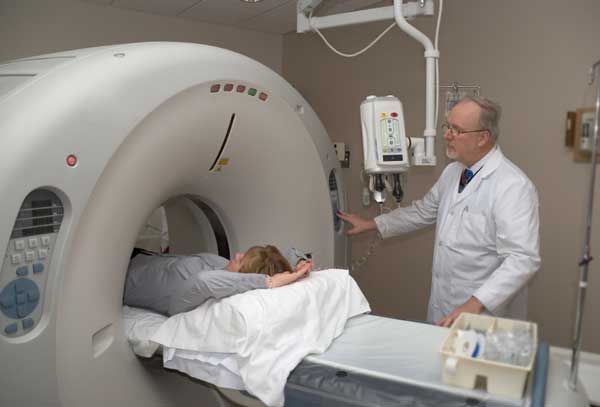In my last post, I discussed the acoustical design of hospital patient rooms, minimizing disturbance from noise produced by activity in the corridor, by phone calls and discussions at the nurses’ stations, and by noise from nearby patient rooms. But that’s only the beginning. There are additional sources of noise in hospitals and there are more noise sensitive spaces. The truth is, healthcare facilities will only be as strong as their weakest link in the design. So what are some of the loudest noise sources and most noise sensitive rooms?
Major noise sources include HVAC equipment rooms, pneumatic tube blower rooms, magnetic resonance imaging machines (MRIs), labor and delivery rooms, hospital kitchens, and cafeterias. The most noise sensitive spaces include patient rooms, physician sleep rooms, and chapels. Of these major noise sources, mechanical equipment rooms and MRI rooms are the two that can be the most challenging to address because they can generate high levels of vibration as well as noise. Let’s focus on MRI equipment rooms and we’ll save mechanical equipment rooms for another time.
MRIs can produce high levels of impulsive noise. The impulsive nature of this noise causes it to be particularly disturbing. MRI locations within a hospital should be planned carefully to avoid placing an MRI below, above, or horizontally adjacent to noise or vibration sensitive rooms. In particular, they should not be located near patient rooms, physician sleep rooms, or chapels. They should also not be located near rooms that will have vibration sensitive equipment, such as neurosurgery OR’s. This may seem like common sense, but often considerations other than noise are at the forefront of designers’ minds. Whenever possible, MRIs should be located on a slab-on-grade rather than on an upper building level. This will greatly simplify the vibration and sound isolation constructions. This is especially true when the MRI is being installed in an existing building. Installing an MRI in an existing building increases the difficulty of incorporating noise and vibration control because of the limitations imposed by the existing building structure.
At Acoustics By Design, we are brought in to design acoustics and noise control for hospitals in every stage of the process, from Schematic Design to Construction Administration. Some of our design recommendations are simple and straightforward (as mentioned above) but a lot of our work involves professional engineering, sophisticated sound measurements, and 3D modeling of the spaces. We can help you meet the new recommendations for mechanical noise and vibration control in the AIA/ASHE Guidelines for Design and Construction of Health Care Facilities. Because when acoustics and noise control are designed right from the beginning, it keeps everybody smiling, from the architects and owners, to the hospital staff and the patients.
